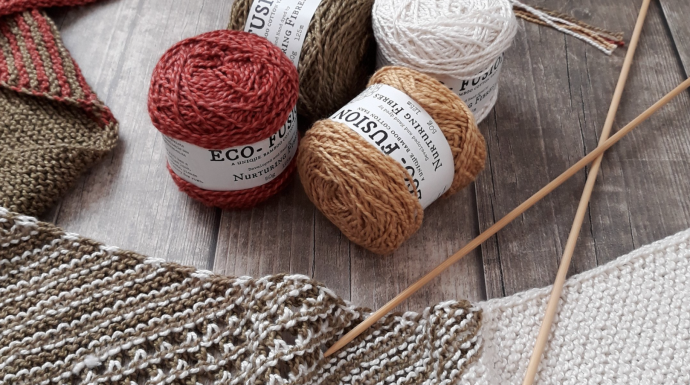Crochet Questions & Answers

Hello, my dear crocheters! Here I will try to answer some of the most common questions crocheters have and to anticipate some questions you might have in future. In my opinion, being a “good” crocheter is not about making perfectly stitched, elaborate, artful creations. It is rather a matter of confidence. You need to be sure of what you are doing and how to do it, and then have the confidence to figure out what to do if things aren’t going quite right. Understanding why you do certain things and why they turn out the way they do increases confidence and leads to successful crocheting. The more you learn, the better you become, in crochet as in life. So feel free to leave your questions below! Be sure to make them as detailed as possible, and I will try to help you as best as I can.
Question 1. I want to work a three-dimensional shape in the round. Is it possible to crochet a tube?
Certainly! Crochet a foundation chain with as many stitches as you need for the circumference you desire. Making sure the chain is not twisted, insert the hook into the first stitch of the chain and work a slip stitch to form a ring. Work a build-up chain (turning chain) to raise the hook to the appropriate height, then work into each stitch around. At the end of the round, join with a slip stitch to the top of the beginning chain. Repeat this round for as many times as required to get the desired length.
Question 2. My tube isn’t straight. What makes it skew?
This is a common problem, inherent in the stitching. It happens because the stitches are not exactly on top of each other. Because you are working in the same direction all the time, there is no opposite pull on the stitches to straighten them out. You can prevent the skewing by turning your work after joining at the end of each round.
Question 3. What is tapestry crochet?
Tapestry crochet is a multicolor crochet technique that uses tight, single crochet stitches to create a strong, sturdy fabric. It is most often used for baskets, bags, and other useful and decorative items. The color not in use is carried and caught by the working color, adding to the strength of the fabric and preventing yarn floats that could snag.
Question 4. What is amigurumi?
Amigurumi is the Japanese word for knitted or crocheted stuffed doll, but as the word is used today, it means any three-dimensional crocheted (or knitted) stuffed creature: person, animal, monster, or other imaginary persona, even food! Common amigurumi techniques include working single crochet in rounds without joining and making separate shaped pieces that are typically stuffed and sewn together. Use a smaller hook than normal to make tight stitches that will prevent the stuffing from showing through to the right side. Use purchased plastic eyes, or create facial and other features with embroidery. Creative amigurumi designers use many innovative decorative, shaping, and construction techniques in their work.
Question 5. Is fabric really the right word to use when talking about crochet?
Like weaving or knitting, crocheting is a method of creating a fabric. It may be lightweight or heavy, lacy or dense, smooth or textured. It may drape fluidly over the hand, or stand stiffly at attention. These fabric characteristics are a function of stitch pattern, fiber, and gauge. While there is no one perfect crocheted fabric for every use, there are features that make various ones ideal for different purposes.
Question 6. What is drape?
The drape of a fabric is an expression of how the fabric hangs, how stiff or how supple it is. Several things influence the fabric’s drape:
- The gauge of the stitching in relation to the size of the yarn. A tight gauge creates a stiff fabric.
- The yarn itself. Some yarn is naturally stiff, but it may feel less so after washing. Linen softens up considerably after washing, as do some wools. Wash and block your swatch and see how you like it then. Some less expensive synthetic yarns have a plasticlike feel that makes them more suited to craft projects than to crocheted garments.
- The stitch pattern. Single crochet fabric is stiffer than double crochet fabric. If you are having trouble getting a fabric you like with the basic stitches, try working an extended stitch to see if that loosens things up, but be aware that it may change your gauge.
- Your technique. Relax! If your goal is a fabric with a nice, soft drape, be sure you are holding the hook gently and allowing the yarn to flow through your fingers. If the fabric is still too stiff despite your best efforts, switch to a different yarn.
Question 7. Is there a right side to my fabric?
Probably. If you are doing a highly textured stitch like cables or bobbles, the “interesting” side is the right side. When working in rounds, the smoother side is the right side. Ultimately, however, the right side is whichever side you want it to be.
Question 8. How do I tell which is the right side when I’m working back and forth?
Unless your pattern says otherwise, the first row worked after the foundation chain is usually the right side. You may want to hang a stitch marker on the front of the fabric, so you’ll be able to recognize the right side from the wrong side on later rows.

It’s very exciting to get new ideas and patterns.
Now I know how to remember the right sides!🙂
Most Popular